|
Previous:
Actual size versus actual pixels<
Index of this page
Conclusions
Although the new scan results of the overhauled Imacon
Flextight 848 scanner do not make a difference to the final conclusions
about resolution and resolving power in terms of "Which-one-is-best"
and overall ranking, it does show a marked improvement in proven
resolving power of all films. All films now easily hit the 40 lp/mm
mark that is the highest resolution pattern on the test chart, and
with remaining contrast for resolving even higher resolutions. Now
this is no real surprise considering other sources about 100 ISO
film resolution, but the badly calibrated "backup" Imacon
646 that I used for the first public release of this test, just
did not give good enough results for especially the color negative
films to prove it. No such problems with the overhauled 848 and
the new scan results. Both color and contrast were much better,
and the initial scan results could be relatively easily fine tuned
in Photoshop. Velvia is now close to neutral in it's color rendition,
close to the even more accurate Sony Alpha 900. Both Portra and
Ektar feature high red saturation, as they should, because they
were designed for that, with quite neutral bleus, greens and yellows.
As in the first public release of the test results,
Velvia 100 beats Ektar 100 in terms of resolution and especially
cleanness of scan results. That last fact helped by slide film's
much higher overall contrast, giving scans smoother gradients and
much less (color) noise. The difference is smaller though, than
in the first release of this test. However, clearly, scanning color
negative film at such extremely high (8000 ppi) resolutions is a
challenge even for a well designed high-end scanner as the Imacon.
Drum scanners and wet mounting may result in smoother results for
negative film. An interesting new find was the unexpectedly bad
performance of the Blue channel in the color negative scans. As
I speculated, this maybe attributable to the "color" of
the dyes of a color negative film, that may effectively block a
significant amount of the blue light transmission. This is another
reason why slide film may, and will, give better overall results
during scanning.
All of the described issues regarding scanning of color
negative film should not be overrated though. When scanning at more
realistic 2500-4000 ppi resolution maximum, much of these issues
will be ameliorated. Both grain and noise will be much less, and
the blue channel issues probably "averaged" out. I doubt
if any but the highest quality scanners like Imacon, dedicated film
scanners, or drum scanners will possibly show such issues related
to the Blue channel scan performance. Normal "flatbed"
type scanners with film scanning capabilities, just don't have the
resolving power and usually already give much "smoothed"
out blurry results, see the results of my own Canon 9950F in the
test setup (which
admittedly is not the highest ranking flatbed, but I have yet to
see any valid test proving a flatbed of being able to truely scan
more than +/- 2000 ppi optical resolution).
Although Ektar 100 is not the world's finest grain color
film, it may be the world's finest grain color negative
film though. It certainly has finer grain than Kodak Portra 160VC,
but since the test did not include Fuji color negative film, it
is difficult to tell. On the positive site though, it IS a fine
grain film, and certainly has the potential to be useful in applications
requiring big enlargements. Actually, looking at the results, I
begin to wonder what, if even possible, would be the results if
Kodak managed to create a neutral (NC), instead of
highly saturated vivid (VC), color negative variant
of this particular film.
You should keep in mind that many of the crops of the
scans represented here are huge enlargements compared to the original.
If an image doesn't look as sharp as you expected, it may simply
be because it's way bigger than expected as well. As seen in the
last discussed test results, even though Ektar 100 performed slightly
less than Velvia 100, it still manages to capture much of the detail
of a 60 x 90 cm test chart, allowing an almost equally sized enlargement
without much loss of detail. That is an impressive result.
In the end though, comparing it to the pixel monster
Alpha 900, that last one wins. Velvia 100 follows behind awfully
close though. In terms of cleanness and detail, it would however
probably require either a drumscan, and more likely also a medium
format film scan to match the Alpha 900 level of detail. A medium
format 100 ISO film scan though, is very likely to beat the Alpha
900 in terms of detail, considering Velvia is already that
close in 35 mm format. Not bad for such a small piece of film! Especially
if you consider that, due to the nature of film scanners and enlargers,
the effective film area is usually slightly smaller than the real
24 x 36 mm exposed area, more often than not, from 1-3 mm is lost
due to scanning frames or enlarger masks. This is contrary to a
digital camera, where the entire frame is always maintained.
Download
The first three images are direct flatbed scans of the
original test chart at 300 ppi resolution. They are included as
a reference of how much detail is actually present in the original
test chart. The remaining images are the scans, downscaled from
the very high 8000 ppi to a more manageable 4525 ppi that is also
comparable to the Sony Alpha 900's resolution. All scans (not the
Alpha 900) are optimized by sharpening. I would not recommend sharpening
up these images any further, as I think I already pushed these images
to their limits in this respect. You may get ugly artifacts applying
additional sharpening. The downscaling and optimization also makes
them more easily comparable to the Sony Alpha 900 digital shot,
as that has undergone the full camera processing for JPEG output,
undoubtedly including in-camera sharpening.
Click on a photo to download it.
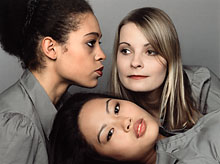
|
Faces
*** Direct flatbed scan of test target, only for
comparison with film scans and Alpha 900 digital shot! ***
|
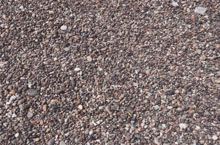 |
Pebbles
Direct flatbed scan of test target, only for comparison!
|
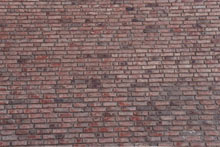
|
Wall
Direct flatbed scan of test target, only for comparison!
|
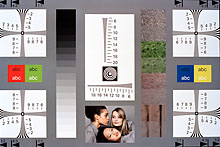 |
Kodak Ektar 100
|
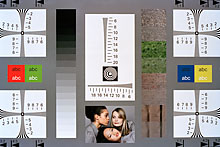
|
Kodak Portra 160VC
|
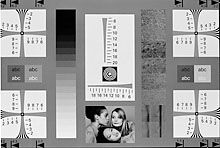 |
Kodak TMax 100
|
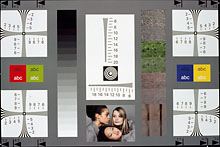
|
Fuji Velvia 100
|
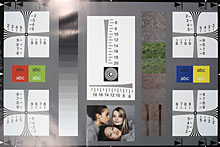 |
Sony Alpha 900
|
Previous:
Actual size versus actual pixels<
|